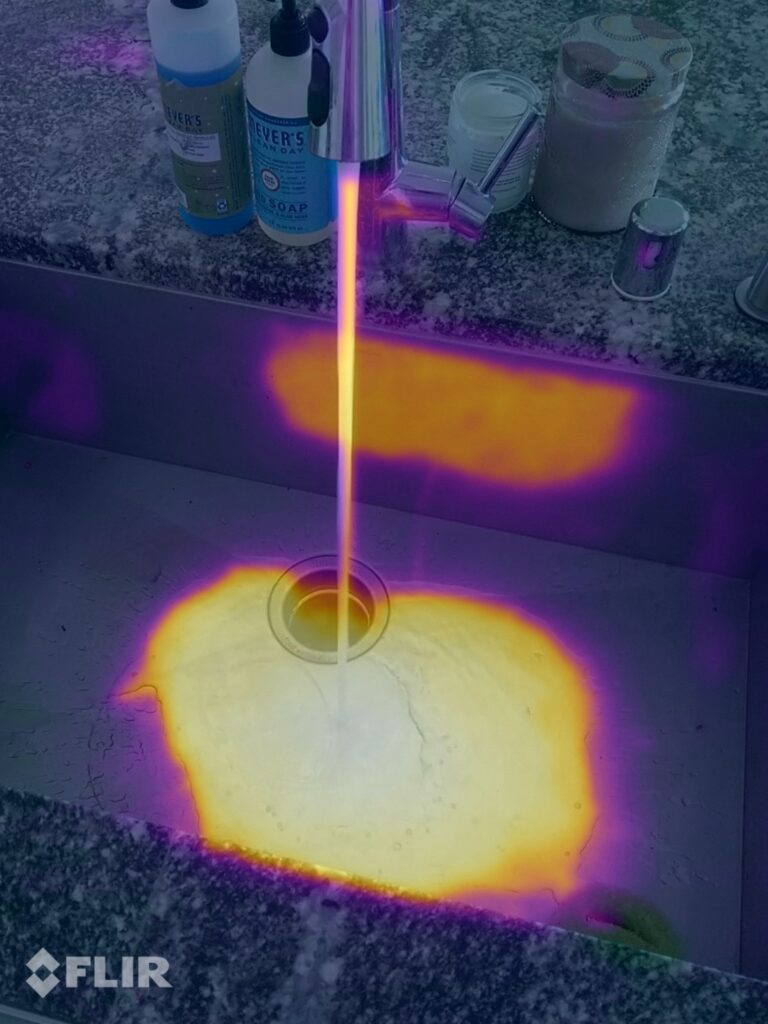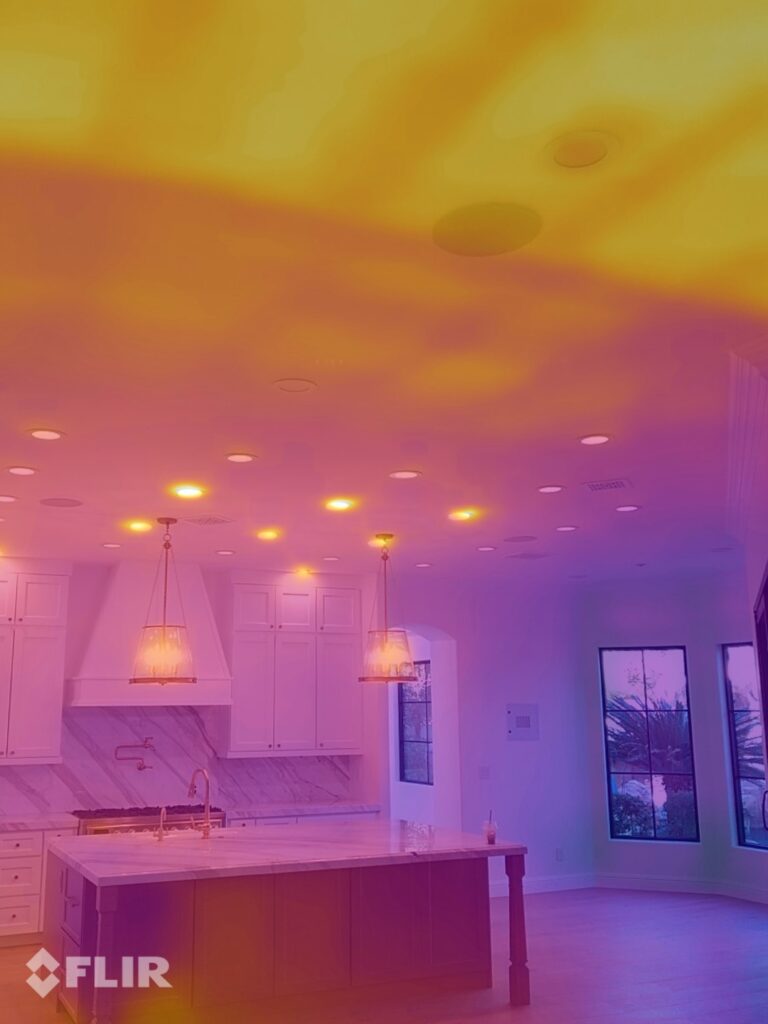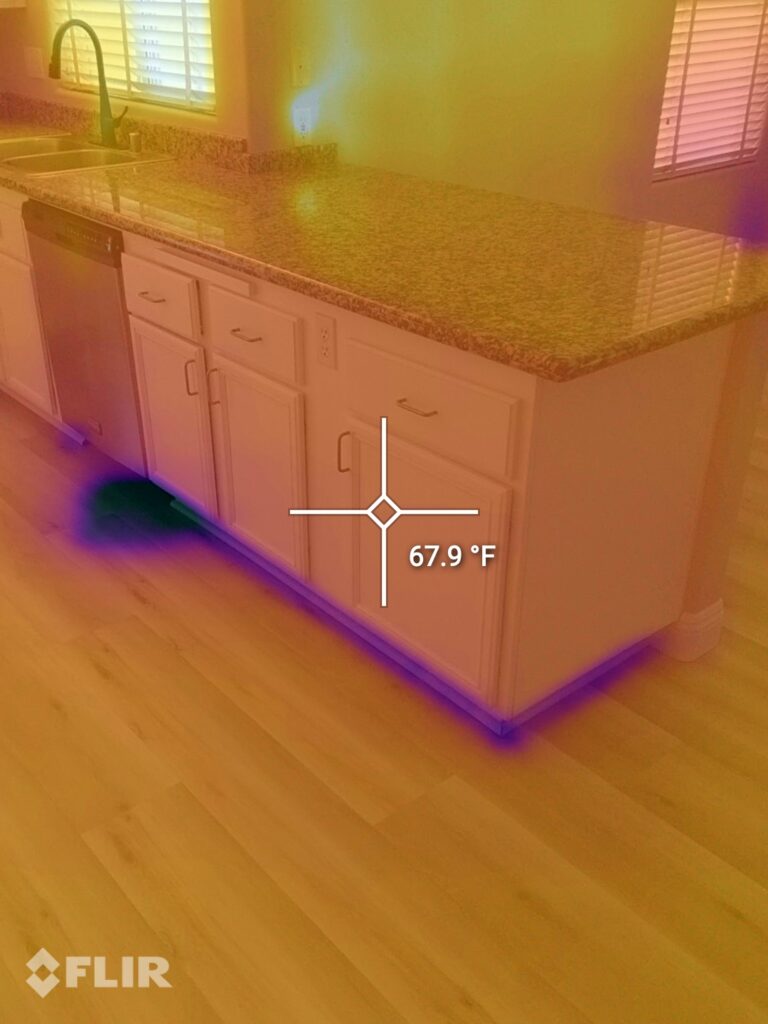The advent of affordable thermal infrared cameras has had the single greatest impact on the home inspection industry since the invention of the flashlight. No other technology has expanded the depth of the inspection and allowed the inspector to review a greater number of issues than infrared cameras.
What’s the big deal? What is so great about infrared thermal imaging? It’s quite simple; infrared thermal imaging allows the inspector to see things that cannot be seen by the naked eye.
By law, a home inspection is a visual, non-invasive, non-intrusive inspection. In Nevada a home inspector is not allowed to open walls, poke and probe or even damage any surface during his (or her) inspection. The scope of the inspection is limited to what the inspector can visually review. Infrared allows the inspector to review systems and components in a different spectrum of light. These devices physically expand the scope of a visual inspection service and allow the inspector to see issues that are not visible to the naked eye. It is truly a remarkable technology!

An infrared camera can find areas of missing ceiling and wall insulation. They can demonstrate proper Low-E window orientation. They allow the inspector to spot overheating breakers and conductors. The inspector can easily see HVAC system ducting leaks in the attic. Sometimes infrared cameras can spot broken water pipes in slabs.
Before now, thermal imaging equipment was very costly and out of the financial reach for many professionals in the Inspector of Structures (home inspection) industry. The technology used to be so expensive that most inspectors who took the financial leap of owning the technology would charge an additional fee just for breaking out their thermal infrared equipment. However, there are still many inspectors who charge an additional fee to provide a thermal review within the scope of their inspections.

It’s important that you understand how the technology is used within the scope of a home inspection. Many people have the misconception that the inspector is performing a variation of an efficiency review within the home inspection. We are not energy auditors, and our inspector is not reviewing the efficiency of the structure, which is a prohibited act per NAC645D.470. For a home inspector the thermal imager is merely a tool that allows the inspector to perform a more in-depth inspection.

I recently performed a home inspection, and the last procedure of my inspection was to perform a thermal review. During this procedure I gave the kitchen ceiling a sweep with my thermal imager and a thermal anomaly, a large dark blue spot about the size of a basketball, appeared in the middle of the ceiling. I lowered the thermal imager and absolutely nothing was visible. I then set up a ladder and put my moisture meter on the ceiling at the suspect area and the meter pegged to 99.9%. Further investigation revealed that the shower valves in the master bathroom above were leaking within the wall. Without the thermal imaging equipment this issue would have gone undetected until significant damage occurred, and my client, the home buyer who hired me, would have inherited the problem. The listing agent was able to have the seller correct the issue before title transfer occurred, sparing my client a significant amount of expense.
Thermal imaging equipment is an invaluable tool that allows the inspector to perform a better inspection. There should never be a charge to the client for the inspector to use necessary equipment to perform the best possible inspection he (or she) can perform.

